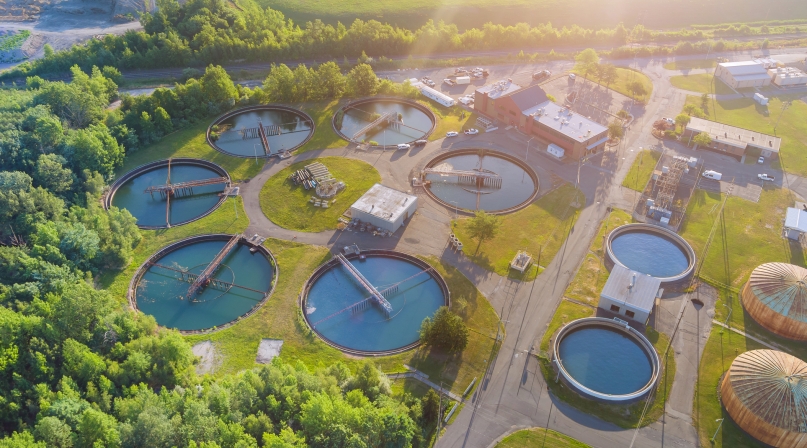U.S. Environmental Protection Agency announces actions to combat PFAS contamination
Author

Charlotte Mitchell Duyshart

Rachel Yeung
Upcoming Events
Related News

Key Takeaways
UPDATES:
On April 17, the U.S. Environmental Protection Agency (EPA) announced that the agency is extending its public comment period for the Draft Sewage Sludge Risk Assessment for Perfluorooctanoic Acid (PFOA) and Perfluorooctane Sulfonic Acid (PFOS) until August 14, 2025.
On May 14, the U.S. Environmental Protection Agency (EPA) announced that it will uphold the current National Primary Drinking Water Regulations (NPDWR) for perfluorooctanoic acid (PFOA) and perfluorooctane sulfonic acid (PFOS), reaffirming its commitment to addressing PFAS contamination. This action extends PFOA and PFOS compliance deadlines for affected water systems, establishes a federal exemption framework and launches a new outreach effort—the PFAS OUTreach Initiative (PFAS OUT)—to support communities in meeting drinking water standards for “forever chemicals.” The initiative specifically targets rural and small water systems, offering tailored assistance.
Through PFAS OUT and its broader WaterTA (Water Technical Assistance) program, EPA will engage directly with public water systems that require capital improvements to address PFAS contamination. More information about the new PFAS OUT initiative to come.
On April 28, the U.S. Environmental Protection Agency (EPA) announced a new suite of upcoming actions to address contamination from per- and polyfluoroalkyl substances (PFAS). These measures, outlined by EPA Administrator Lee Zeldin, aim to strengthen scientific understanding, enhance enforcement and build partnerships with impacted communities, including counties and other local governments.
Relevant actions outlined by the EPA
The EPA’s latest announcement includes several provisions that will directly affect county governments and their residents. The following highlights are particularly relevant for counties:
Strengthening Science
- Designating a lead within EPA to coordinate PFAS activities across the agency
- Implementing new PFAS data collection and testing strategies
- Updating PFAS Destruction and Disposal Guidance on an annual basis (previously every three years)
- Accelerating the advancement of PFAS detection and treatment technologies
Fulfilling Statutory Obligations & Enhancing Communication
- Developing and enforcing effluent limitation guidelines (ELGs) for PFAS manufacturers and metal finishers
- Addressing compliance challenges related to national drinking water regulations for PFAS
- Utilizing authority under the Resource Conservation and Recovery Act (RCRA) and the Safe Drinking Water Act (SDWA) to respond to PFAS releases
- Working with Congress and industry to establish a clear liability framework that ensures the polluter pays—not passive receivers such as counties
Building Partnerships
- Advancing PFAS cleanup in contaminated drinking water systems
- Collaborating with states and the public to develop PFAS risk assessment tools
- Supporting state enforcement efforts, including review of air quality petitions related to PFAS
- Providing resources for PFAS-related investigations to hold polluters accountable
What is PFAS and why does this matter to counties?
PFAS are a group of long-lasting, synthetic chemicals used in everything from food packaging and nonstick cookware to firefighting foam used by airports, the military and fire departments. Two common PFAS chemicals—PFOA and PFOS—have been linked to serious health issues, including certain cancers, immune suppression, reproductive harm and hormonal disruption.
As owners, users and regulators of water resources, counties are directly impacted by federal regulation and legislation regarding PFAS. Since PFAS are extremely persistent in the environment, counties are increasingly seeing detections in groundwater, surface water, soil and public water systems. Counties are passive receivers of PFAS as counties do not produce or release PFAS into the environment but are responsible for managing contamination through drinking water or wastewater systems. This puts counties at risk of being held liable for cleanup under federal law, particularly the Comprehensive Environmental Response, Compensation, and Liability Act (CERCLA).
Ongoing advocacy
NACo continues to advocate for explicit liability protections for counties and other passive receivers. Without a narrow exemption, local governments could be forced to bear the cost of cleaning up pollutants they never created—shifting the burden from polluters to residents and taxpayers.
NACo supports the EPA’s efforts to establish a liability framework that protects passive receivers and holds actual polluters accountable. Local governments should not be penalized for contamination they did not cause, and any federal PFAS response must ensure that the “polluter pays” principle remains intact.
Counties remain committed to working alongside federal partners to protect public health, secure clean water and ensure fair environmental policies.
Additional Resources
Resource
Legislative Analysis: Impact of PFAS Regulations on Counties

Related News

U.S. House of Representatives passes SPEED Act and other permitting reform bills
On December 18, the U.S. House of Representatives passed the SPEED Act (H.R. 4776). The SPEED Act would strengthen county involvement in decision-making and make needed commonsense reforms to the federal environmental review process.

House Natural Resources Committee advances the Endangered Species Act Amendments Act of 2025
On December 17, the House Natural Resources Committee advanced the Endangered Species Act (ESA) Amendments Act of 2025 (H.R. 1897). The version passed by the committee adopted several changes from the initial bill and would address key county concerns by improving the implementation of the ESA. The legislation now awaits a floor vote before the whole U.S. House of Representatives.

Senators introduce bipartisan UPGRADE Act to support small and rural public water systems
On December 15, Sens. Lisa Blunt Rochester (D-Del.) and Roger Wicker (R-Miss.) introduced the Unincorporated Partnerships for Grant Resources, Assistance, and Drinking Water Enhancements (UPGRADE) Act (S. 3465), a bipartisan bill that would strengthen federal support for small public water systems and helps unincorporated communities access clean and affordable water.